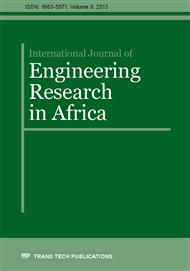[1]
Social accountability: SA 8000:2008.
Google Scholar
[2]
M. R. Zadeh, V. A. Zaloga, O.V. Ivchenko, N. V. Sushchenko, Universal and branch standards of management systems: problems of interaction and common implementation, Visnyk of SUMDU. Technical Sciences Series, 4 (2011) 191-201. (In Russian)
Google Scholar
[3]
M. R. Zadeh, V. A. Zaloga, O.V. Ivchenko, Research of international universal standards interaction when development of integrated management systems, Modern Technologies of Engineering, 7 (2012) 315-332. (In Russian)
Google Scholar
[4]
Martin Ma, J.T. Marlin, E.K. Kaufman, L. Wiesman, From Words to Action: A Business Case for Implementing Workplace Standards, first ed., Centre for International Private Enterprise, Washington, 2009.
Google Scholar
[5]
V. Domnytska, V. Zhoglo, V. Novikov, Analysis of normative documents concerning social responsibility of organization, Standardization, Certification, Quality, 6 (2010) 13-17. (In Ukrainian)
Google Scholar
[6]
I. Maimunah, Corporate social responsibility and its role in community development: an international perspective, The Journal of International Social Research, 2 (2009) 199-209.
Google Scholar
[7]
A.B. Carroll, Corporate social responsibility evolution of a definitional construct, Business Society, 38 (1999) 268-295.
DOI: 10.1177/000765039903800303
Google Scholar
[8]
A. Chiarini, K. Al Shagana, An innovative way to integrate a quality and social-ethical system in the post graduate education of "Scuola Normale Superiore" of Pisa – Italy, The 3rd International Conference "Integrating for Excellence", Sheffield Hallam University, (2007) 5.
Google Scholar
[9]
C. Carey, Tuscany Region (Italy) and the SA8000 Standard for Social Accountability, first ed., ISEAL Alliance, London, 2008.
Google Scholar
[10]
Guidance on social responsibility: ISO 26000:2010, http://www.iso.org
Google Scholar
[11]
Facilities by country and workers by country charts, http://www.saasaccreditation.org
Google Scholar
[12]
Certified facilities list, http://www.saasaccreditation.org
Google Scholar
[13]
Facilities and workers by industry charts, http://www.saasaccreditation.org
Google Scholar
[14]
Ukrainian network of United Nations Global Compact, http://www.globalcompact.org.ua/ua/about/what (In Ukrainian)
Google Scholar
[15]
SA 8000, http://en.wikipedia.org
Google Scholar
[16]
CB by country, http://www.saasaccreditation.org
Google Scholar


